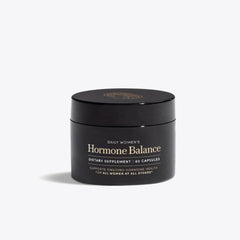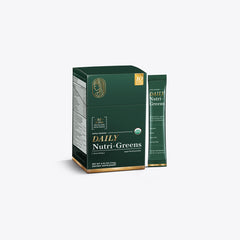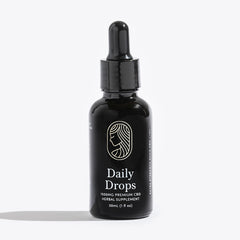Only have a minute? Here’s a summary:
- The primary function of the Endocannabinoid System (ECS) is to maintain balance throughout your body. Endocannabinoids (neurotransmitters) and cannabinoid receptors are the two essential players in this system.
- Stress can contribute to a decline in ECS function, and one approach that may support the healing of this system is to introduce phytocannabinoids like CBD.
- CBD is not used to treat underlying medical conditions; instead, it plays a role in supporting the ECS to address imbalances by amplifying your body’s natural balancing and healing properties.
- It takes time for our bodies to adjust to CBD, and even longer for the maximized benefits to present. In fact, many of our members report their best results around three months into following a daily, consistent, customized routine!
Your Endocannabinoid System & You: A Simple Guide To How It Works
Meet the Endocannabinoid System
 Our bodies are really incredible. Like, REALLY incredible. For your entire life, your body has been there to support you through the good and the bad, the trials and triumphs, the downfalls and celebrations. Biologically, this is a massive feat. There are over 37 trillion cells in the adult human body, and all of them need to work in harmony. This harmony between your cells ultimately allows body systems to form and function, but the cycle doesn’t stop there. As our cells join in harmony to create systems, our systems need to join in harmony to create a functional human body. One of the most important players in that harmony is the Endocannabinoid System.
Our bodies are really incredible. Like, REALLY incredible. For your entire life, your body has been there to support you through the good and the bad, the trials and triumphs, the downfalls and celebrations. Biologically, this is a massive feat. There are over 37 trillion cells in the adult human body, and all of them need to work in harmony. This harmony between your cells ultimately allows body systems to form and function, but the cycle doesn’t stop there. As our cells join in harmony to create systems, our systems need to join in harmony to create a functional human body. One of the most important players in that harmony is the Endocannabinoid System.
The Endocannabinoid System, ECS for short, is responsible for maintaining balance throughout your body. In order for any body system to function properly, it needs to be able to communicate via molecular signals. Neurotransmitters are the communication molecules, and receptors are responsible for receiving these signals.
Since the discovery of the ECS in the early 1990’s, researchers have identified ECS receptors in nearly every area of the body. This revelation eventually led researchers to conclude that the primary function of the ECS is to maintain balance throughout the body. This system is largely composed of CB1 and CB2 receptors, and the neurotransmitters that this system uses to communicate are called endocannabinoids.

- CB1 receptors: Primarily located in the immune system, liver, spleen, digestive system, and skin
- CB2 receptors: Primarily located in the central nervous system, reproductive system, and the cardiovascular system
- 2-AG: Fatty acid neurotransmitter, endocannabinoid; primarily binds to the CB2 receptors
- AEA: Fatty acid neurotransmitter, endocannabinoid; primarily binds to the CB2 receptors
Stress & The ECS
Exposure to stress – whether it is environmental, physical, or mental – rapidly mobilizes enzymes like FAAH (pronounced fa, like fa-ther) and MAGL that break down fatty acids such as endocannabinoids. This means that the more stress you face, the faster your body will break down endocannabinoids. Ultimately, this may result in endocannabinoid deficiency, otherwise known as low endocannabinoid tone.
While this may sound irreversible, you’re in luck! Phytocannabinoids, which are cannabinoids produced in plants, are remarkably similar in structure to endocannabinoids. According to Dr. Lakisha Jenkins, a traditional naturopath and registered herbalist, “The only way to address these deficiencies is by introducing phytocannabinoids, nutritionally, by consuming a holistically balanced supplement.” But how exactly do phytocannabinoids interact with the ECS?
Supporting your ECS with phytocannabinoid therapy
 Certain phytocannabinoids, such as THC and CBD, are able to bind directly to the CB1 and CB2 receptors with varying affinities. In other words, some cannabinoids strongly bind to these receptors leading to vastly different biological effects. For example, THC binds tightly to these receptors, whereas CBD loosely binds to these receptors. Researchers are currently investigating if this difference in binding affinity explains why THC elicits psychotropic effects (in other words, can get you “high”), while CBD does not.
Certain phytocannabinoids, such as THC and CBD, are able to bind directly to the CB1 and CB2 receptors with varying affinities. In other words, some cannabinoids strongly bind to these receptors leading to vastly different biological effects. For example, THC binds tightly to these receptors, whereas CBD loosely binds to these receptors. Researchers are currently investigating if this difference in binding affinity explains why THC elicits psychotropic effects (in other words, can get you “high”), while CBD does not.
Additionally, researchers believe that certain phytocannabinoids may inhibit FAAH, which reduces the capacity of this enzyme to break down endocannabinoids. Ultimately, slowing the breakdown of endocannabinoids may help increase your endocannabinoid tone, nudging your ECS, and therefore your body, back toward balance!
Reframing your CBD journey
Now that you know a little bit more about the ECS and the supportive role phytocannabinoids can play, it’s time to understand what this means for your CBD journey. As you can imagine, shifting your endocannabinoid tone takes time. Everyone’s body chemistry is different, so there is no one-size-fits-all dose or routine that guarantees results. While we do like to see results within the first few weeks, the effects of CBD compound over time. On average, our members report their best results around the three month mark of following a customized, daily, consistent routine.
Additionally, you’ll notice that we have not mentioned any specific role of CBD in treating underlying medical conditions. This is no accident. At this time, the scientific community has not determined whether or not CBD can be used to treat underlying medical conditions. Instead, CBD can be a helpful tool for addressing the symptoms of these underlying conditions by supporting the ECS. Or, in other words, by supporting your body’s natural balancing and healing properties.
For example, we work with many members struggling with underlying conditions such as anxiety. Instead of asking yourself how CBD can treat your anxiety, try identifying the symptoms of anxiety that have the most impact on your life. For example: increased stress levels or sleep challenges (both of which our members have successfully used CBD to help address!). However, it’s important to understand that these positive changes are likely a manifestation of your ECS balancing itself, resulting in many of the benefits that our members report!
Getting started
If you have already made a purchase with us, booking a Wellness Coaching Session is a great way to learn more about our wellness products. Our team of Certified Wellness Coaches can customize a routine that both addresses your health goals and fits your lifestyle.
If you haven’t purchased with us yet, we encourage you to take our Get Started Quiz. To learn more about the products that may best suit your needs. Regardless of whether you have purchased with us or not, we are always available via email (wellness@myeq.com). We can answer any questions you may have and even discuss your dosage! We are here to help, every single step of the way.




